 Consider this the DVD bonus feature you didn’t get with the book: an illustrated tour of all of the rough ideas that were refined into the finished book.
Consider this the DVD bonus feature you didn’t get with the book: an illustrated tour of all of the rough ideas that were refined into the finished book.
When I had the idea for a miniature golf book, the first thing I thought of was hitting the ball into the hole, and having it drop down to the next page. That part seemed pretty easy to do – just cut a hole in the page. More of a challenge was coming up with walls. The miniature golf courses of my childhood tended to have walls made of spraypainted bricks – solid enough that the ball bounced off, but usually just a little askew from years of being stepped on and banged into with clubs. As bricks aren’t a great material to make a book out of, the first thing I did was to try and find a material that would work instead. The image at the top of the page was my very first experiment with making pages that A) had walls attached to them, and B) could still close like a book. It’s made out of foamcore, which they also don’t make books out of, but at that point I figured I’d work out the mechanics first, then figure out the materials.
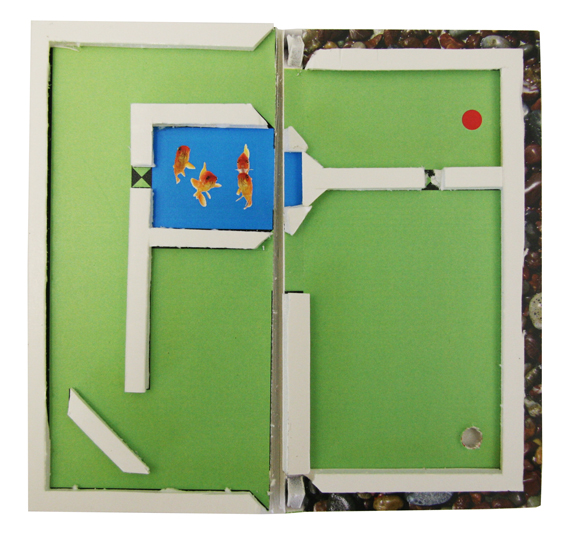
The next step was making a golf course. I wanted the course to go over the whole page spread (ie. the left and right pages). So my first challenge was to build up each page with walls, but for the book to still be foldable. Here’s what I came up with, the very first prototype for the book.
The first course was far simpler and more geometric than the courses in the finished book. Again, I was still working out the mechanics; the course designs would come later. Notice the wall that runs vertically through the middle of the page – if the book folded in two, with a split down the middle, there’d be no room for the walls, and it wouldn’t close properly.
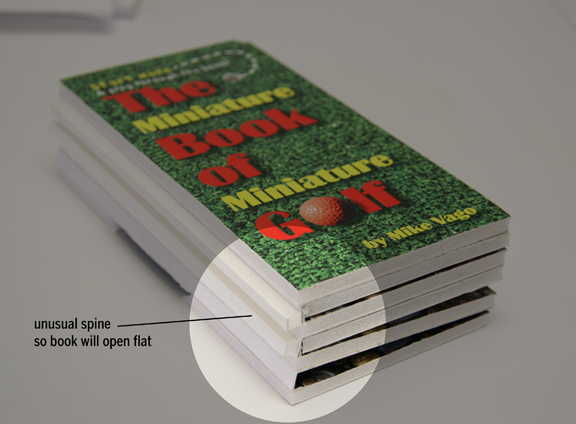 So it actually folds in three – there’s a 1/4″ strip in the middle of the page (including that wall), that’s part of the spine of the book. To the left is an outside view. The course is designed in such a way that, when you fold it up, the walls don’t run into each other. They fit together like a puzzle.
So it actually folds in three – there’s a 1/4″ strip in the middle of the page (including that wall), that’s part of the spine of the book. To the left is an outside view. The course is designed in such a way that, when you fold it up, the walls don’t run into each other. They fit together like a puzzle.
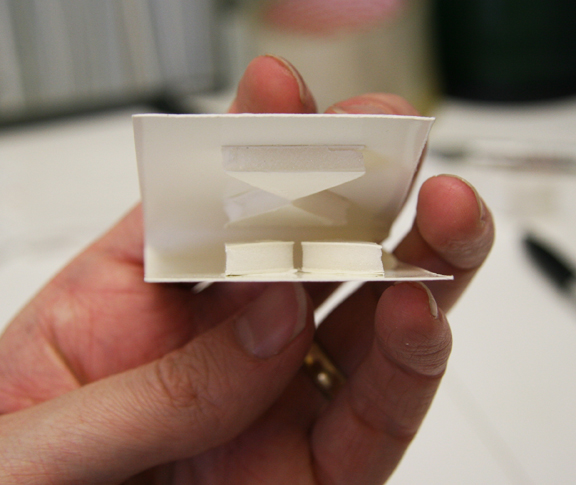 However, as I did a few of these, I realized that I was really limited in how I could design the courses,if I couldn’t make walls that intersected when the book folded up. So, I came up with a way to make that work. In the overhead view of the course, you can see that two of the walls have a space in the middle with an X. When you fold the book shut, the X’s line up. One half of the X is filled in, to keep the wall solid. The other half is open, so that the opposite page’s X fits in when you close the book. Here’s a model I made to test the concept.
However, as I did a few of these, I realized that I was really limited in how I could design the courses,if I couldn’t make walls that intersected when the book folded up. So, I came up with a way to make that work. In the overhead view of the course, you can see that two of the walls have a space in the middle with an X. When you fold the book shut, the X’s line up. One half of the X is filled in, to keep the wall solid. The other half is open, so that the opposite page’s X fits in when you close the book. Here’s a model I made to test the concept.
So, I had worked out my miniature golf book, and discovered I could design some pretty interesting courses. I even started to experiment in 3 dimensions.
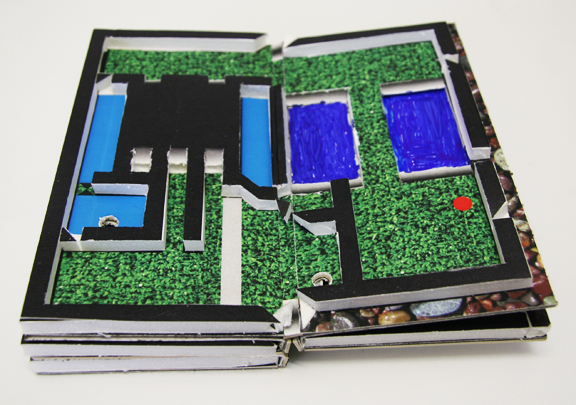 My favorite mini golf courses have always been ones that operate on multiple levels – you hit the ball into a pipe, walk down some steps, the ball reappears on a different green 3 feet below, you have to hit it up a hill, etc. So I worked out this course, where you have to hit the ball up a ramp, on top of the wall, then stay up there without falling off. I also worked out my first water hazard. In the finished book, if you really want to cheat, you can hit the ball out of the water pretty easily. But in the original concept, the water was deeper than the ball, so you were really stuck.
My favorite mini golf courses have always been ones that operate on multiple levels – you hit the ball into a pipe, walk down some steps, the ball reappears on a different green 3 feet below, you have to hit it up a hill, etc. So I worked out this course, where you have to hit the ball up a ramp, on top of the wall, then stay up there without falling off. I also worked out my first water hazard. In the finished book, if you really want to cheat, you can hit the ball out of the water pretty easily. But in the original concept, the water was deeper than the ball, so you were really stuck.
So, I had an idea I liked. I started showing it to some people at Workman. (I already worked for Workman long before the book, so I had some very smart book publishing pros to draw on as a resource from the very beginning.) People liked it, but everyone had the same comment: too expensive to make. You’d either have to make the walls out of plastic, or die-cut several layers of illustration board and glue them together. Also, on ordinary paper, the ball slides all over the place. I needed a material that would grip the ball.
So, I played around with different materials. This next one was a short-lived idea that didn’t go anywhere, but I found a rubber material that gripped the ball really well. But before I got the point of actually plotting out a course, I abandoned the material because I had a better idea. Truth be told, someone else had a better idea. My co-worker, Elaine Pumarejo, pointed out one of our other books, the 10-Color Book. It’s a book for toddlers, with thick pages made from illustration book. On each page there’s a space, where the kid has to fit in a different colored puzzle piece. She said all I had to do was make the space bigger, and golf-course-shaped, and all my problems would be solved. So, I ignored her. I loved my idea, with the interlocking walls, and the Xs, and the ramps − I was even working on tunnels!
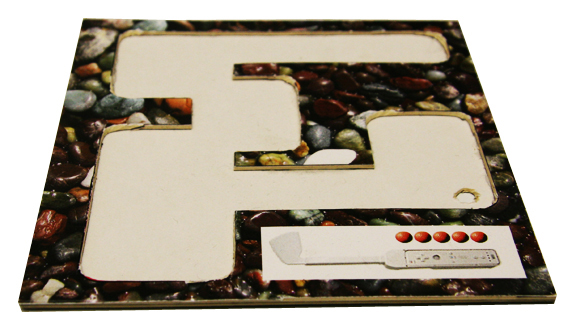 But, eventually, I realized she was completely right. The walls didn’t need to be so tall − illustration board was just high enough to stop the ball from rolling away. And two layers of illustration board instead of a bunch of wall pieces meant it wouldn’t cost a gazillion dollars to make. So, that led to this.
But, eventually, I realized she was completely right. The walls didn’t need to be so tall − illustration board was just high enough to stop the ball from rolling away. And two layers of illustration board instead of a bunch of wall pieces meant it wouldn’t cost a gazillion dollars to make. So, that led to this.
That’s the book, right there. Everything else was just making it look pretty. Notice the filler graphics – real mini golf courses often have gravel surrounding the course, so I grabbed an image off the internet of beach rocks as filler. And the golf club is actually the golf club attachment for the Nintendo Wii. The visuals for most books start off as this kind of rough sketch, which we then fill in with the real images later. What you see above was enough to pitch the idea. I made a few sample courses, slapped a cover on it, and was ready to go. (I searched and searched, but I can’t find that version that I sold the book with, otherwise I’d include a picture). I took it to another friend of mine in the office, Cassie Murdoch, who ended up being my editor. She liked it, the editor-in-chief liked it, Peter Workman liked it – it was going to be a Workman book!
The next step is a bit of behind-the-scenes stuff the book-buying public doesn’t really see. 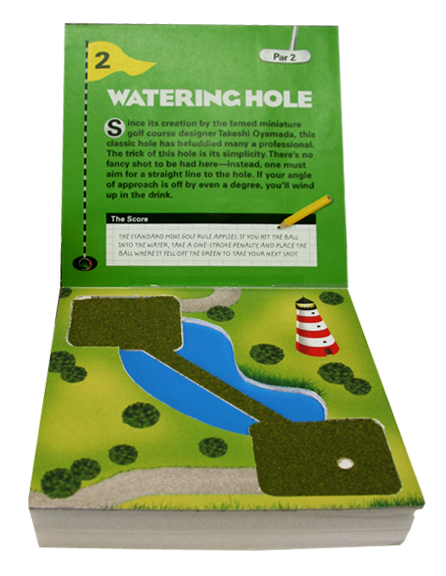 I had to make a mockup of the book to pitch the idea, but we had to make dozens of hand-made mockups to show bookstores, people who might want to write about the book, and even the manufacturer – the best way to let everybody know what the finished book was going to be all about was to make one.
I had to make a mockup of the book to pitch the idea, but we had to make dozens of hand-made mockups to show bookstores, people who might want to write about the book, and even the manufacturer – the best way to let everybody know what the finished book was going to be all about was to make one.
As it happens, my job here at Workman involves making these dummy books – we do this for all of our books, whether it’s a simple paperback, or a convoluted golf course in book format idea. So, we got fake grass for the greens (for the real book, we use a nicer fake grass called flocking, but it’s tough to apply by hand, so for the dummies we used paper-like sheets of fake grass used in model railroads and architects’ models), and hand-cut the course shapes out of illustration board. The result is a pretty convincing facsimile of the real book.
You’ll also notice that the design was starting to come together. The book’s designer, Netta Rabin, had the idea of framing the page with mini golf elements – the flag, club, pencil, etc. Another co-worker, James Williamson, is a longtime childrens’ book illustrator, so he did spot illustrations of some classic miniature golf obstacles – the lighthouse, the windmill, the pirate’s chest. And John Passineau, who usually designs our calendars, created the backgrounds to all the pages, and to my lasting regret, I forgot to credit him on the actual book. I’ll have to fix that when we do the second printing.
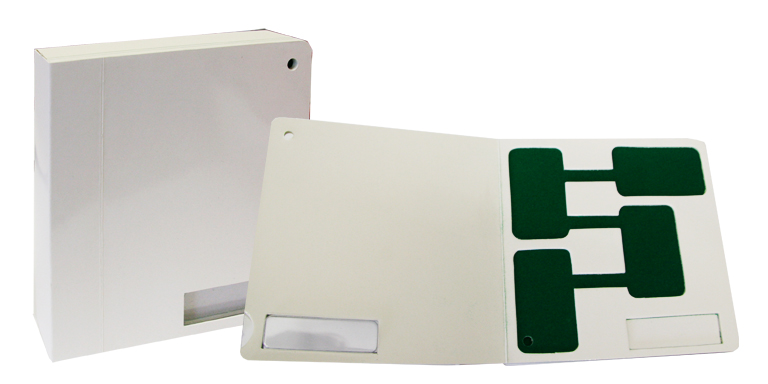 So, from our fake version, the printer came back to us with a blank version of the book. We could see how everything worked – the flocking, the plastic window in the cover, etc., but we could also paste on the artwork to show the book off to people. If you’re trying to convince a bookstore owner to put the book on her shelves, it’s a much easier sell when you can put a working book in front of her than just try and explain, “it’s a book, but it’s a golf course, but… just trust me – it’ll be great!” Another plus was that the dummies made from these blanks had the real playing surface, so it really looked and felt like the real book.
So, from our fake version, the printer came back to us with a blank version of the book. We could see how everything worked – the flocking, the plastic window in the cover, etc., but we could also paste on the artwork to show the book off to people. If you’re trying to convince a bookstore owner to put the book on her shelves, it’s a much easier sell when you can put a working book in front of her than just try and explain, “it’s a book, but it’s a golf course, but… just trust me – it’ll be great!” Another plus was that the dummies made from these blanks had the real playing surface, so it really looked and felt like the real book.
As we passed around dummy books to people, the only thing left for me to do was wait for the real thing. A few weeks ago, we got our first copy, and last week it started showing up in stores! The official release date is May 1, but many some bookstores are already in stock, and some web sites, including Amazon, are shipping already.
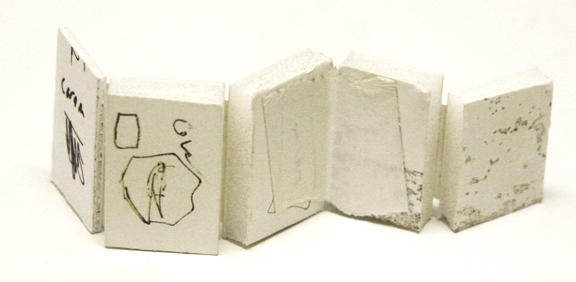 As for me, I’m splitting my time between hoping it sells, and working on my next idea. Here’s what I’ve got so far.
As for me, I’m splitting my time between hoping it sells, and working on my next idea. Here’s what I’ve got so far.
It doesn’t look like much now, but just wait…

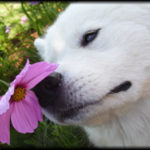



14 Comments
Michael Young
August 15, 2009 at 10:24 amDear Mike,
I love your miniature golf book. I’ve long been a fan of miniature golf, and I self published a
children’s book with a miniature golf-based theme a few years ago (which my son illustrated). It’s
called “Around the World in 80 Putts” in case you’re interested. I also have a business that rents portable miniature golf courses. How is your book selling? I see it in a lot of places ( I bought my
copy at Barnes and Noble). If you have a mailing list, I would love to know when your next project
is released. Keep on putting.
Michael Young
mik
August 19, 2009 at 7:29 pmIm designing and building a mini golf course here at the docklands in Melbourne, Australia. would love any feedback my site is http://www.glowgolf.com.au
Valerie
November 22, 2009 at 7:14 pmWhere did you source the little bittie balls? My kids love the book, but after several trips to school all the balls have disappeared and it would be great to replace them so they can enjoy the book some more.
Brendan Nuding
April 12, 2010 at 1:18 amI am very pleased for Phil and his wife on his magnificent masters win.
Lionel Eisenbruch
July 18, 2010 at 5:30 ami got your book today t the book store and I think its Awesome.
but I was wondering if there was a website where i can get replacement parts. Thanks
Mike Vago
July 19, 2010 at 8:58 amUnfortunately, we’re not set up to sell replacement parts. But the balls are ordinary ball bearings, which you can get from any bike shop, or online for very cheap. Most hardware stores don’t carry them any more because kids use them in some elaborate form of vandalism. There’s no way to get a replacement club, sadly, but you can hit the ball just as easily with a pen. (The club was a toothpick in the original prototype for the book)
Marty
September 16, 2010 at 5:42 amWhat size balls are they. I’ve found sites on line but not sure of the measurement?
Mike Vago
September 16, 2010 at 8:24 am3/16″
Skylar
July 25, 2012 at 2:13 pmMike Vago, can u send me a miniature chalk to go with my miniature Pool table which drives me nuts because the is NOOOOO miniature CHALK CUBE. My mom says it did not come with one, I say why list it in your book describing the “Anatomy of a Pool Table” why have it as the closing line on your vidio”CHALK UP?”if u didn’t include one in you book, it cannot be actually described as “JUST like a Billards game, because that would include a chalk cube. My address is Skylar Lewis 819 3rd street Imperial Beach, ca. 91932 p.s. could you also send miniature chalk to any other people who bought your book whos address you still have? Thank you, Skylar
Mike Vago
July 25, 2012 at 2:35 pmSkylar, I’m glad you’re so into the book that you’re looking to up the realism. Chalk would have been expensive to make small and include in the set, and would have pushed the price of the book up. I had thought, at one point, of including a golf pencil and scorecard with The Miniature Book of Miniature Golf, but it added a lot to the price and didn’t add a lot to the experience.
Likewise, with chalk, it added to the cost but didn’t add a lot to the experience of the game. I’m not sure chalking the cue would even help – the tip is a different material than the real thing, and the balls are a different material than the real thing. So the friction is different. I did try and make it as much like a real pool table as possible, but at that scale, some small compromises do have to be made.
Skylar
July 25, 2012 at 4:14 pmsOOO, DOES THIS MEAN YOU ARE GOING TO SEND ME A MINI CHALK OR NOT? yOU MAY NEED TO KNOW i AM A KID, i DON’T KNOW WHAT COMPRIMISESARE YET, OR WORRY TO MUCH ABOUT MONET BECAUSE MY MOM SAYS I’LL GET TO WORRY ENOUGH ABOUT THAT LATER. i DON’T EVEN CARE WHAT THIS GAME IS ACTUALLY MADE OF EITHER AGQIN BECAUSE i AM A KID AND I JUST WANT TO PLAY IT ANYWHERE ANYTIME JUST LIKE REAL POOL. BY THE WAY, I DONT THINK MAKING A VERY,OOPS MINIATURE PENCIL AND SCORE PAD WOULD HAVE BBEN GOOD WITH THE GOLF GAME BECAUSE THEN YOU WOULD HAVE TO MAKE TINY GLASSES TO READ IT WITH AND MY MOM DOES WEAR GLASSES WHICH SHE SAYS ARE NOT CHEAP. ANYHOW, SINCE YOU ARE AN INVENTER i THINK YOU COULD EVEN SAND A PIECE OF ROCH INTO A CUBE AND IT’S JUST LIKE CHALK, OR GET A BOX FROM SCHOOL BECAUSE THEY HAVE A LOT THERE AND CHIP SOME OFF AND MAIL THAT CAUSE I THINK ITS THE SAME EXCEPT IT HAS TO BE SQUare and in a little WRAPPER. tHANK YOU, sKYLAR. P.S. THERES ALSO THE BIG BOX OF SIDEWALK CHALK MY MOM BUYS FOR $3.00 AT wALMART OR BIGLOTS JUST SO YOU KNOW. P.S. AGAIN,IT Hass TO BE GREEN.
Skylar
July 25, 2012 at 4:16 pmdarkkkk green, PLEASE, THANK YOU. DARK GREEN
Mike Vago
July 25, 2012 at 4:24 pmSorry, but I don’t have mini chalk. I don’t think anyone makes that. I’m not sure what would happen if you cut up a regular-sized cube of chalk. Could you make a smaller cube, or would it crumble? I’ll play around with it and get back to you.
Also, a compromise is either when two people want different things, and meet in the middle. Or, when you want something, and you have to settle for just part of that thing, but it’s still better than nothing.
Skylar
July 25, 2012 at 5:05 pmThank you, I guess, I’m still not sure if you are going to send me a chalk cube, but my mom says you are going to try. she said get back with me means you will write after u try and make one. I hope that’s right, but my mom says daddy can make one for me that would be easier she just wanted me to be able to express my self, so i just want to say if you can’t send me a mini chalk then change the name of your book for Pete’s sake, why would you call it a pocket billiards if you don’t have mini size chalk? I guess u don’t have kids yet or u wopuld know how much the little things matter. ps have u ever been to legoland or seen all the other little things that are fun to play with, i’m talking tiny guns and stuff like that, got to go walk my dog now, shes suppossed to be a minature to, but she isn’t, she is like a 40 pound chiwawah my mom says a chiwhatisit?